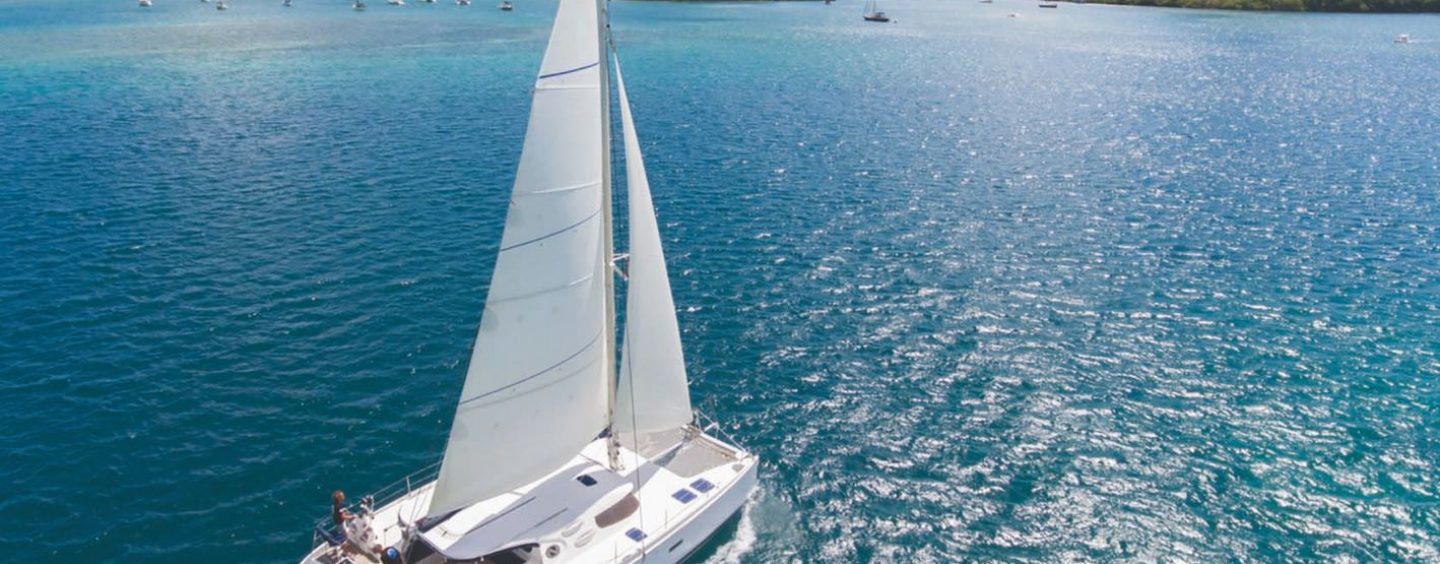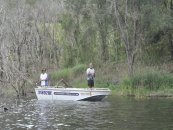Loads, Sail Selection & Recommendations with Ben Kelly
Q: How do sails for cruising multihulls differ from that of a cruising monohull?
A: Having higher loads is the biggest issue. Because the boat does not heel and release the load, when the pressure hits it means every aspect of the sails and rigging must be up-specced for any multihull. Mainsails generally have more roach, spinnakers are a little flatter in cut, and headsails tend to be smaller and more substantial, as it is the one sail used across the wind ranges.
Q: Why is sail selection important for a cruising multihull?
A: Every boat will be different, but understanding your sailing angles and crossovers is vital to getting the most out of your boat and also having a safe and more enjoyable sailing experience. The load increases quickly on multihulls, the apparent wind moves forward, and the loads spike, so knowing the limits of your sails and their intended wind and angle of sailing they are designed to be carried is necessary.
Q: What are some of the go-to sails that you recommend for a performance cruising cat?
A: The G-zero is an excellent versatile downwind option. It has a massive range of use and can be sheeted in quite hard for lighter wind well forward of the beam and used right through the wind range up to say 25 knots true when eased out and tweaked forward, the benefit of a sail that is easy to furl away, small to stow and with such a wide range of use makes it perfect for cruisers.
The G2 is a great running option with plenty of horsepower; if you want to cover miles, this is the best sail to get downwind. Square top mains with head release systems get you low down horsepower, great for coastal cruising and reaching and downwind. The automatic twist of the head can assist when going to windward in more extreme or gusty conditions.
Q: Can you have too many sails?
A: Yes, you can have too many sails. Ideally your sailmaker would design a wardrobe that gives you crossover points and sailing angles that cover the full sailing range. It would be best if you also had a plan for how to stow the sails onboard. The plan needs to be created before getting your inventory so you can organize them below deck to protect them from the elements and access them with ease.
Q: What about storm sails for multihulls?
A: Storm sails are important, although they hardly ever get used. Again, a plan is required so you can access this sail if you need to. For example, if you have three reefs in the main and can easily set up and deploy a storm jib, you will gain more balance and be able to control the boat in 40+ knots of wind. A storm jib can get you to a safe harbor to ride out bad weather if needed.
Q: How do you decide on certain sailcloth for various sails on a cruising cat?
A: The first thing to consider is the environment the sails are going to be subjected to in particular humidity. The strength of breeze for the region the boat is planning on sailing can have an impact also. For instance, global cruisers who want to cross oceans short-handed need super-durable sails and engineered for the worst, but someone spending most of their time in the light winds of Asia would appreciate a lighter suit of sails.
Q: Some of our multihull owners have 3Di sails.
What are 3Di sails and why are they a great product for my type of boat?
A: 3Di sails have a monolithic structure. The material is pre-impregnated and consolidated over a 3D mould when heat is applied. This material does not delaminate; it is very lightweight, easy to handle, has a long lifespan, and excellent shape retention. Best of both worlds!
Q: What are other sail technologies applied to performance cruising cats?
A: 3Di Downwind sails are evolving from racing technology and making a very light and durable downwind option, which is excellent in the conditions we see in the tropics. Performance sails that are suitable for extended cruising and also racing in all climates is a considerable shift in the market cruising cats. The traditional compromise to make a choice, either way, has almost gone with 3Di ENDURANCE and 3Di OCEAN products. Sail hardware continues to evolve, and there is a trickledown from the French racing boats. Reef locks are a useful feature that is suitable for ocean passages when you need to relieve the load from the reef lines and prevent wear.
Q: What can multihull sailors do to make sailing easier for short-handed crews?
A: Well-spaced out reefs as incremental changes in reefing are not suitable for short-handed setups. User-friendly furling systems and partial furling can be a great way to step down the horsepower. Correctly sized torque cables make a big difference to downwind furling sails and can be added to older sails. Reef-able headsail structures give you more options to balance the boat quickly and reduce power.
Q: How about sail trim? What key tips can you offer to trim sails on a cruising cat to get optimal performance?
A: With the mainsail, there isn’t a vang, so it can over twist easily. Watch you leech telltales, and in a moderate breeze sheet-in until they fly at least 50% of the time. A tweaker outboard on the boom can help control excessive leech twist and stop boom pump and accidental jibes. With the headsails, slide tracks forward when the sails are eased, or tweak the sail outboard and down to control the leech, just like the main. Stop pumping and over twisting, which will result in the upper leech shaking and fatiguing.
Q: I need new sails for my boat. What are your recommendations on how one would go about getting a new suit of sails for their multihull?
A: You would approach your sailmaker, and they would evaluate your entire wardrobe. Looking at what you have, assessing what you need for what type of sailing you are doing, and planning when you are going to need to replace any sails in the future are all things to be determined.
Discuss your needs and wants and how your current sails have performed and any aspects that you would like to improve. Also important is your planned sailing and common conditions you experience. Every sail is custom designed and built, and this is something that the sailmaker must make important decisions on when optimizing your inventory. Have your sails intended to create the best step-downs across the wind range and sailing angles. Be open-minded to your sailmakers’ suggestions as everything keeps evolving and improving. There may be gains to be made that ultimately will result in a safer and more enjoyable cruising experience.
Interested in cruising sails for your multihull?
ben.kelly@northsails.com Phone: (07) 3396 5822
Published in print July-September 2021






























